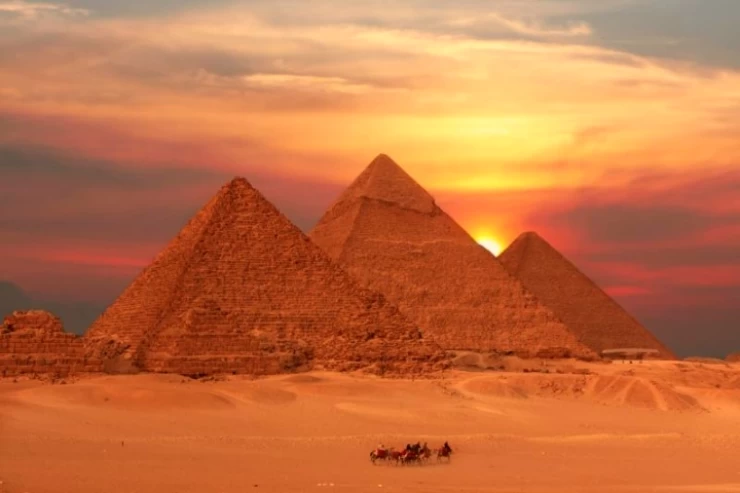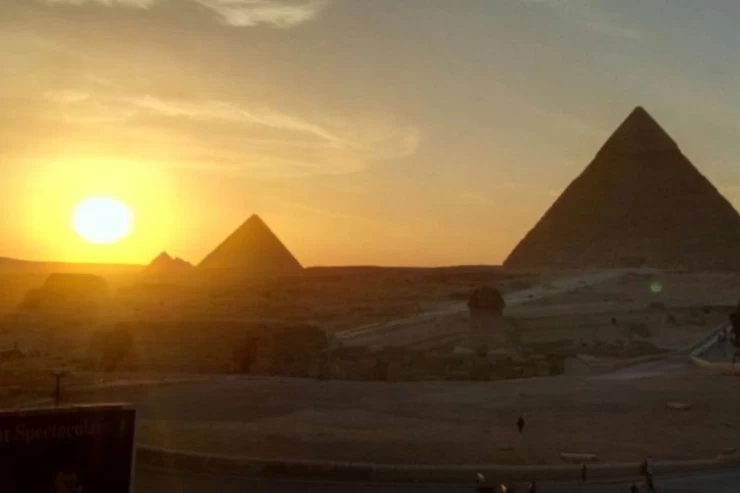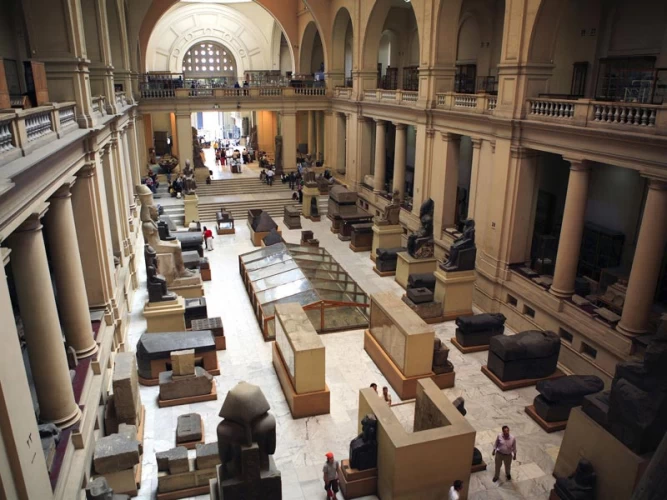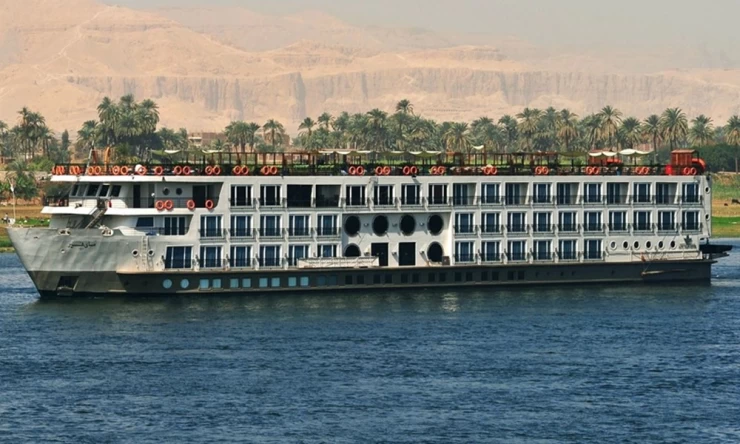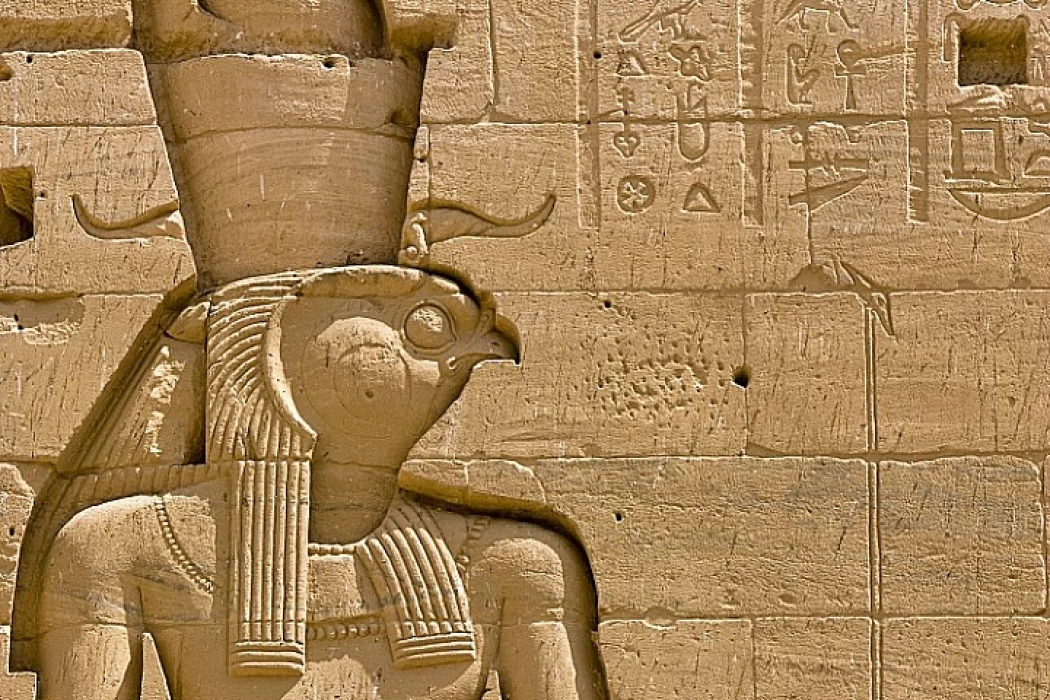
Dios egipcio Amun Ra | Religión del Antiguo Egipto
Su nombre significa "el oculto", Amun es una divinidad muy antigua con características guerreras. A partir del Reino Medio o quizás antes, específicamente durante la V dinastía, se convirtió en la deidad principal en Egipto y de Tebas durante el nuevo reino también, tomó el nombre de Amun-Ra y las características del Dios creador. Es el esposo de Mut y el padre de Khonsu, formando la famosa tríada tebana con estas deidades del antiguo Egipto.
Amón era el nombre de una deidad en la religión del Antiguo Egipto, que se convirtió en una de las deidades más importantes de la historia del Antiguo Egipto. Los antiguos egipcios representaban al dios Amón en varias formas. Amón apareció como un hombre con cabeza, cabeza, rana, carnero, un hombre con una corona de avestruz y un ganso.
Comenzó como el dios del aire y la fertilidad de Tebas, cuyo poder creció a medida que la ciudad de Tebas crecía de una pequeña aldea en el antiguo reino a una poderosa metrópolis en los Reinos Medio y Nuevo. Ascendió para convertirse en miembro de los ocho dioses llamados colectivamente Ogdóada de Hermópolis. Luego se convirtió en miembro de los tres dioses conocidos como la Trinidad de Tebas. En ese momento fue llamado el patrón de los dioses del faraón y finalmente se combinó con el dios sol Ra, que era la deidad soberana del Reino Antiguo, para convertirse en Amun-Ra, rey de los dioses y gobernante de la Gran Enéada. Amun-Ra fue aclamado como un dios nacional, el creador del universo, el protector personal del Faraón y el dios de la guerra.
El Templo de Karnak fue el templo más antiguo de Amón. Su reputación trasciende las fronteras de Egipto. Su culto se extendió a Etiopía, Nubia, Libia y gran parte de Palestina. Los griegos creían que era una manifestación egipcia de su dios Zeus. Incluso Alejandro el Grande pensó que valía la pena consultar el oráculo de Amón cuando necesitaba una prueba poderosa para convertirse en el faraón rey de Egipto, el templo del oráculo en el oasis de Siwa en el desierto occidental egipcio es una evidencia de lo importante que era este dios para todos los egipcios.
Viaje a Egipto ahora para visitar las maravillas del antiguo Egipto y los magníficos sitios, templos y pirámides construidos en los albores de la historia y aprenda más sobre la complicada mitología y los cientos de dioses y diosas adorados en la tierra de los faraones.
Los dioses del antiguo Egipto eran muy parecidos a los humanos que amaban y odiaban, se sentían celosos y luchaban, se vengaban, mataban y también murieron durante un mito asombroso lleno de eventos, acción y eventos dramáticos que inspiraron a los directores y productores de películas modernas a crear. películas de fama mundial sobre la grandeza de los faraones y los dioses a los que adoraban.
His name means "the hidden one", Amun is a very ancient divinity with warrior characteristics. Starting from the Middle Kingdom or maybe before, specifically during the 5th dynasty, he became the principal deity in Egypt and of Thebes during the new kingdom as well, he took the name of Amun-Ra and the characteristics of the creator God. He is the spouse of Mut and the father of Khonsu, forming the famous Theban triad with these deities of ancient Egypt.
Amun was the name of a deity in ancient Egyptian religion, which became one of the most important deities in Ancient Egyptian history. The ancient Egyptians depicted the god Amun in various shapes. Amun appeared as a man with a head, head, frog, ram, a man wearing an ostrich crown, and a goose.
It began as Thebesian air and fertility god, whose power grew as the city of Thebes grew from a petty village in the old kingdom to a powerful metropolis in the Middle and New Kingdoms. He rose to become a member of the eight gods collectively called the Ogdoad of Hermopolis. He then became a member of the three gods referred to as the Thebes Trinity. At that time he was called the patron of the Pharaoh's Gods and was eventually combined with the sun god Ra, who was the sovereign deity of the Old Kingdom, to become Amun-Ra, king of the gods and ruler of the Great Ennead. Amun-Ra was hailed as a national god, the creator of the universe, the personal protector of Pharaoh, and the god of war.
He appeared in the Pyramid Texts as a member of the Oedead, an important god at Thebes. His importance began in the Middle Kingdom, when King Amenhotep had compound names with Amun
After the expulsion of the Hyksos, he became the king of the gods. During the reign of Akhnaton, a religious and political revolution broke out against him, but he returned to become the great god of Egypt.
The Temple of Karnak was the oldest Temple of Amun-Re. His reputation goes far beyond the borders of Egypt. His worship spread to Ethiopia, Nubia, Libya, and much of Palestine. The Greeks believed it was an Egyptian manifestation of their god Zeus. Even Alexander the Great thought it worth consulting Amun's oracle when he needed powerful proof to become the Pharaoh King of Egypt, the temple of the oracle in Siwa Oasis in the Egyptian Western Desert is evidence of how important this god was to all Egyptians.
Travel to Egypt now to visit the ancient Egyptian wonders and magnificent sites, temples, and pyramids built at the dawn of history and learn more about the complicated mythology and the hundreds of Gods and Goddesses worshipped in the land of the Pharaohs.
The Gods of ancient Egypt were very much like humans they loved and hated, they felt jealous and fought, they took revenge, killed, and also died during an amazing myth full of events, activities, and dramatic events that inspired modern movie directors and producers to create world-famous movies about the grandeur of the Pharaohs and the Gods they worshipped. Take advantage of this offer and discover the wonders of the blessed land of Egypt, from historical times to the present day.
Amun possessed many powers among the Egyptians. He not only created himself, but the entire universe. Furthermore, after being influenced by the Hyksos, the Egyptians developed a god of war, believing this to be the reason for their strength. Consequently, they chose Amun from among their deities to be the god of war.
The belief in the god Amun was very strong, and there was interest in depicting him in many images, the most important of which was the image of the ram as a symbol of fertility and a symbol of the renewal and flow of water. Appearance of God Amun: A seated or standing man with a crown surmounted by two feathers.
The image may depict a ram or a man with a ram's head. A ram-headed sphinx or a goose, a frog. Lastly, he has blue skin in some of his representations rather than the usual red-brown. Blue was a colour that the Egyptians connected to air and creation.
Amunet, Mut, or Amunet, is the wife of the god Amun or Amun-Ra, and was known as the cow of heaven, which is the feminine name of the word Amun. Their son was the god "Khonsu", the god of the moon among the ancient Egyptians.
The father, son, and wife formed the holy trinity of the city of Thebes, Mut, or Mut, which means "mother" and is the mother of the gods in ancient Egypt. Its pronunciation and name changed over thousands of years in several cultures and civilizations She is often depicted as an Egyptian eagle, a white eagle.







